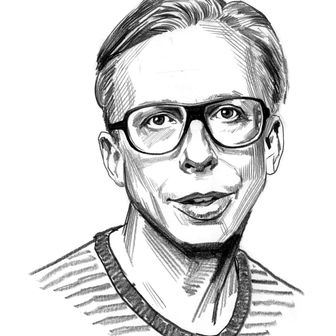It hit “Alice,” a gamine Chloë Sevigny–esque Williamsburg artist, that crack was back very late one night last August. “I actually witnessed peer pressure at Luxx,” she says, referring to the Copacabana of the Electroclash scene. “It was someone who wasn’t comfortable with crack but did cocaine, and their friends were like, ‘Are ya in or are ya not?’ “
Luxx is hardly a crack house; they wanted to go party elsewhere. But it wasn’t the first time Alice had run across hipsters on the rock. And while drugs are as much a part of the coercively with-it, underemployed ‘Burg scene as asymmetrical haircuts, the return of crack is one eighties revival nobody was expecting.
Alice’s initial reaction was I’m kind of freaked out by that, but then her mandatory art-school blaséness kicked in: She thought, Oh, I don’t want to be square.
“I guess it started with coke and then everyone went broke, and so what are you going to do?” says Gavin McInnes, co-founder of Vice, the magazine of record for L-train riders. He’s seen crack become trendy; he’s even smoked the stuff himself – you can buy it near his office, which is in a Puerto Rican part of the neighborhood. “Native Williamsburgers can handle it,” he says. “But then you have rich kids who dive right in. They are going to ruin their lives.”
Since that night at Luxx, Alice has seen crack passed around in the back room of another local bar. It’s yellow and usually smoked in tinfoil or glass pot pipes; few people seem to accessorize with crack pipes (yet). There’s even one red-walled bar, owned by some slumming liberal-arts-school grads, that’s known as “the crack hangout,” as one disgusted art-scenester puts it.
Crack also seems to be making its way up the art-world drug chain. “It’s like that A. M. Homes story where the two suburban straight people smoke crack all weekend and then just go back to their lives,” says Choire Sicha, director of Debs & Co. Gallery in Chelsea, who has a friend who did it for his 36th birthday. “I think what was once a stigma has gotten enough ironic distance to be funny or acceptable.”
“It seems like it’s not frowned upon anymore,” agrees Alice. “Whereas before, crack implied that you’re an uneducated scumbag, all of a sudden it became classy. You’re like, somehow, down with the streets.”
All of which is disturbing news to Bridget Brennan, special narcotics prosecutor for the city of New York. Crack use in general is “nowhere near what it was like in the late eighties,” she says. “Let’s hope they wise up.”
Or maybe just get jobs. In the meantime, though, the return of crack is posing some other problems. “Now when you say to someone, ‘Are you on crack?,’ ” complains McInnes, “they really might be.”
